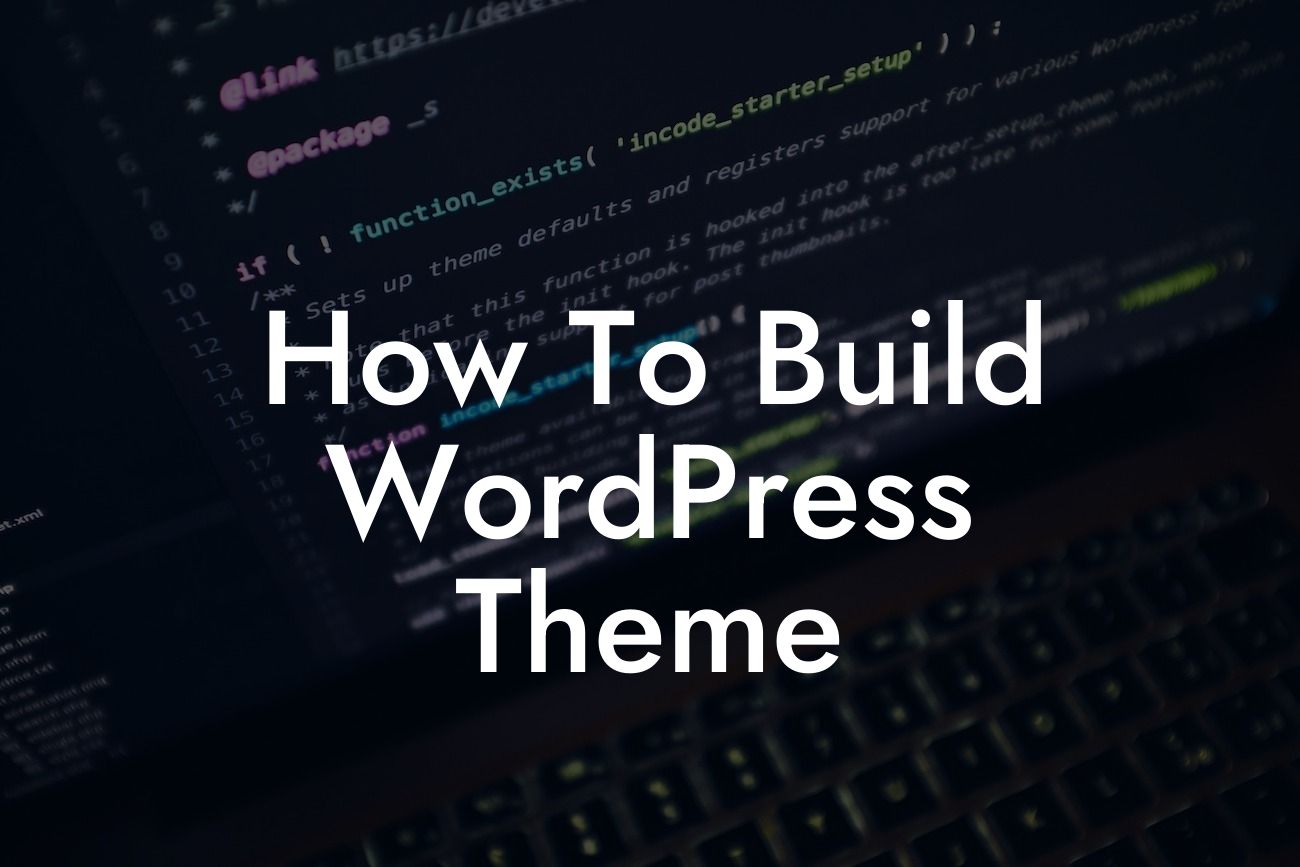Building a beautiful and functional website is crucial for small businesses and entrepreneurs to establish a solid online presence. With WordPress being the go-to platform for website development, learning how to build a WordPress theme can be highly beneficial. In this article, we will guide you through the process of creating a WordPress theme from scratch, allowing you to customize and optimize your website according to your unique brand identity.
Creating a WordPress theme requires a combination of technical expertise and creativity. Follow these steps to build a WordPress theme that will elevate your online presence:
1. Planning and Design:
Before jumping into the development process, it's crucial to plan and design your website layout. Determine the purpose of your website, identify the essential features and functionalities, and sketch out a wireframe. This will serve as a blueprint for your theme development process.
2. Setting Up the Development Environment:
Looking For a Custom QuickBook Integration?
To build and test your WordPress theme effectively, set up a local development environment using tools like XAMPP or WAMP. These platforms allow you to create a local server on your computer, enabling you to work on your theme without affecting your live website. Install WordPress on your local server and get ready to start developing your theme.
3. Understanding the WordPress Hierarchy:
To create a WordPress theme, you need to understand the structure and hierarchy of WordPress files. Familiarize yourself with the core files such as index.php, header.php, footer.php, and style.css. These files control the overall appearance and functionality of your theme.
4. HTML Markup and CSS Styling:
Start building your theme by creating the basic HTML structure in your index.php file. Divide your page into sections using appropriate HTML tags and classes. Apply CSS styling to these sections to achieve the desired look and feel. Use CSS frameworks like Bootstrap or Foundation to expedite your development process.
5. Adding WordPress Template Tags:
WordPress provides a variety of template tags that allow you to dynamically display content on your website. Utilize these template tags to integrate features such as dynamic navigation menus, post loops, widgets, and custom fields. This will enhance the functionality and user experience of your theme.
6. Customizing Theme Options:
To give your users more control over their website's appearance, add theme options. WordPress customizer API allows you to create a user-friendly interface for modifying theme settings such as colors, fonts, and layouts. Incorporating customizer options enhances the versatility of your theme and ensures a personalized experience for your users.
How To Build Wordpress Theme Example:
Let's consider a realistic example of a small business owner, Sarah, who wants to create a WordPress theme for her bakery. Sarah plans her website layout, sketches out the wireframe, and sets up a local development environment. She starts building her theme by creating the HTML structure and applying CSS styling to match her brand's aesthetic. Sarah then adds dynamic content using WordPress template tags, such as a dynamic menu showcasing different bakery products. To improve customization, she integrates theme options that allow users to toggle between different color schemes and customize the website's typography.
Building your own WordPress theme from scratch can significantly elevate your online presence and provide a unique user experience for your visitors. With DamnWoo's powerful plugins, you can further enhance your website's functionality and take it to the next level. Explore our other guides on DamnWoo to expand your knowledge and unlock the full potential of your WordPress website. Try one of our awesome plugins today and join the ranks of successful small businesses and entrepreneurs.













